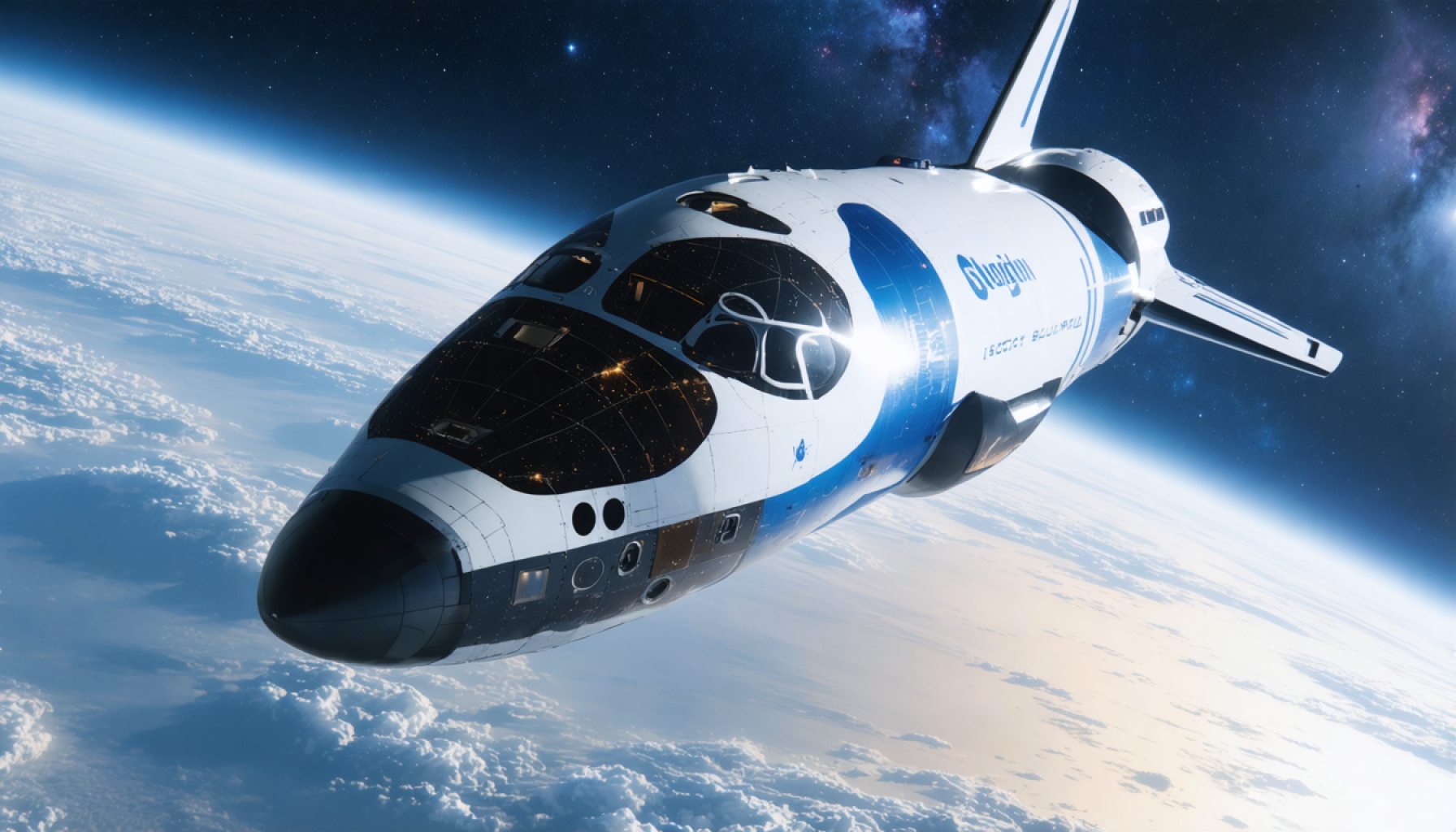- Blue Origin’s New Shepard spacecraft offers civilians a chance to experience space travel, previously exclusive to astronauts.
- The journey’s cost is high, with estimated ticket prices between $200,000 and $300,000, reflecting the exclusivity of space tourism.
- A fully automated 11-minute flight crosses the Kármán line, offering passengers microgravity and stunning Earth views.
- Passengers must meet physical requirements to endure the intense acceleration and deceleration of the journey.
- Blue Origin aims to make space travel more accessible, hoping competition and technology advancements will reduce costs.
- Current pricing highlights space travel’s infancy as a luxury experience, but future developments seek to broaden access.
The dream of hovering on the fringe of our world, gazing down upon the Earth from 62 miles above, is no longer reserved for astronauts alone. Jeff Bezos’ Blue Origin promises this celestial spectacle aboard its New Shepard spacecraft, yet the voyage isn’t for the faint of wallet. Even as sights aboard the spacecraft offer unmatched serenity, the journey comes with a financial burden that echoes the vastness of space itself.
Though official figures remain elusive, whispers from Blue Origin’s inner sanctum suggest that a down payment of $150,000 is necessary merely to embark on the odyssey of claiming a seat. During the famed June 2021 maiden flight, one seat captured headlines when auctioned for $28 million—gesturing towards an entrance fee as stratospheric as the journey itself. However, more grounded estimates posit tickets nestle between $200,000 and $300,000 for future voyages, standing shoulder to shoulder with space tourism’s other titans.
Once aboard, passengers enter a surreal realm for approximately 11 minutes, crossing the Kármán line—the globe’s universally accepted space boundary. Free from the clutches of gravity, they float in microgravity, a prelude to the breathtaking theater of Earth, framed by expansive windows that transform the capsule into a visual feast. Automation rules this realm, as the journey unfolds absent a pilot, letting travelers fully engage with their ethereal surroundings.
Yet, not every hopeful traveler can embark solely by the virtue of wealth. Aspirants must clear certain physical thresholds, ensuring the rapid heartbeat of acceleration and deceleration doesn’t overshadow their orbital sojourn. As Blue Origin navigates its future, ambitions circle around broadening space’s accessibility. With technological leaps and intensified competition, the lofty ticket prices, it is hoped, may descend, allowing more earthbound dreamers to partake in this out-of-this-world adventure.
The current cost stands as a testament to space travel’s infancy—an emblem of a privilege afforded to few but pursued with the fervor of countless. How the future will tilt this balance remains as mysterious as the stars themselves, but it holds the promise of turning a privileged exception into a shared experience. Only time will tell if these starry-eyed aspirations become reality for the many instead of the few.
Space Tourism: The Breakdown of Blue Origin’s New Frontier
The Rise of Space Tourism: A New Era
The realm of space tourism is expanding, and companies like Blue Origin are at the forefront, promising to democratize access to space. Founded by Jeff Bezos, Blue Origin has revolutionized how civilians perceive space travel, although the opportunity remains predominantly for the affluent.
In-Depth Look at Blue Origin’s New Shepard
Features and Specifications:
– Spacecraft Name: New Shepard
– Flight Duration: Approximately 11 minutes
– Altitude Reached: Over 100 kilometers (62 miles), crossing the Kármán line
– Crew Capacity: Around six passengers
– Automation: Fully automated with no onboard pilot
– Window Design: Large windows for enhanced viewing experience
Passenger Experience:
Travelers experience microgravity for a few minutes, offering a unique sensation of weightlessness. The immersive experience is accentuated by large windows, providing a panoramic view of Earth, enhancing the trip’s ethereal quality.
Market Forecast and Industry Trends
Space tourism is slated to become a multi-billion dollar industry by the 2030s. Competing entities like Virgin Galactic and SpaceX drive innovation and may soon influence ticket prices. As technology advances, the expectation is a reduction in costs, potentially broadening access.
– Current Market Leaders: Blue Origin, SpaceX, Virgin Galactic
– Projected Industry Growth: An estimated CAGR of over 16% from 2021 to 2031 (Business Wire report)
Controversies and Limitations
Despite the allure, space tourism raises questions of environmental impact and ethical considerations. Critics argue that the emissions from rocket launches contribute significantly to atmospheric pollution. Furthermore, the high cost raises concerns about space remaining the domain of the wealthy.
Comparisons and Competitors
Compared to Virgin Galactic, which offers suborbital flights at a comparable price range, Blue Origin’s flights emphasize automation and more comprehensive onboard views. SpaceX, on the other hand, targets orbital experiences but at a steeper financial commitment.
Security and Sustainability
Safety Protocols:
Blue Origin emphasizes extensive safety measures, including exhaustive testing before each launch. Safety is prioritized, with backup systems in place to counter anomalies during flight.
Sustainability Initiatives:
The company is exploring reusable rocket technologies to minimize environmental impact. However, the full sustainability of space tourism remains under scrutiny, with ongoing debates about the long-term planetary effects.
Pros and Cons Overview
Pros:
– Unparalleled view of Earth and space
– Experiencing weightlessness
– Fully automated and tested for passenger safety
Cons:
– Prohibitive costs
– Potential environmental impact
– Physical fitness requirements restrict accessibility
Actionable Recommendations
1. Financial Planning: Potential travelers should assess financial situations and consider potential ticket price reductions in the future.
2. Health Preparedness: Prospective passengers should ensure they meet physical fitness criteria, preparing via endurance and cardiovascular exercises.
3. Stay Informed: Follow industry news and trends for announcements on reduced ticket prices or new flight opportunities.
For more information about Blue Origin’s endeavors and updates, visit Blue Origin.
Space tourism is an evolving journey. As technological advancements and competitive market dynamics unfold, the promise of making space a shared experience may edge closer to reality. For now, aspiring space tourists can only prepare and hope for a day when a visit to space is pervasive, not exclusive.
